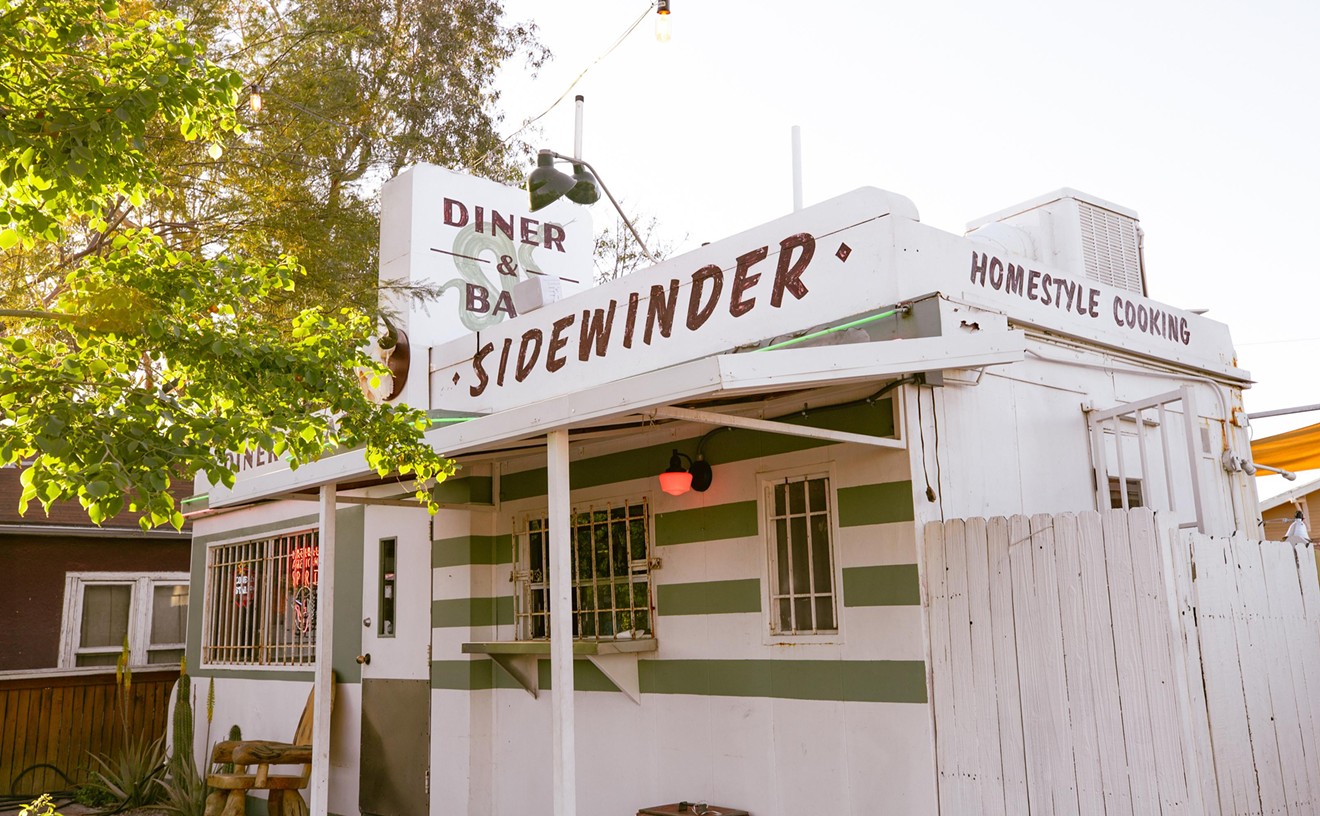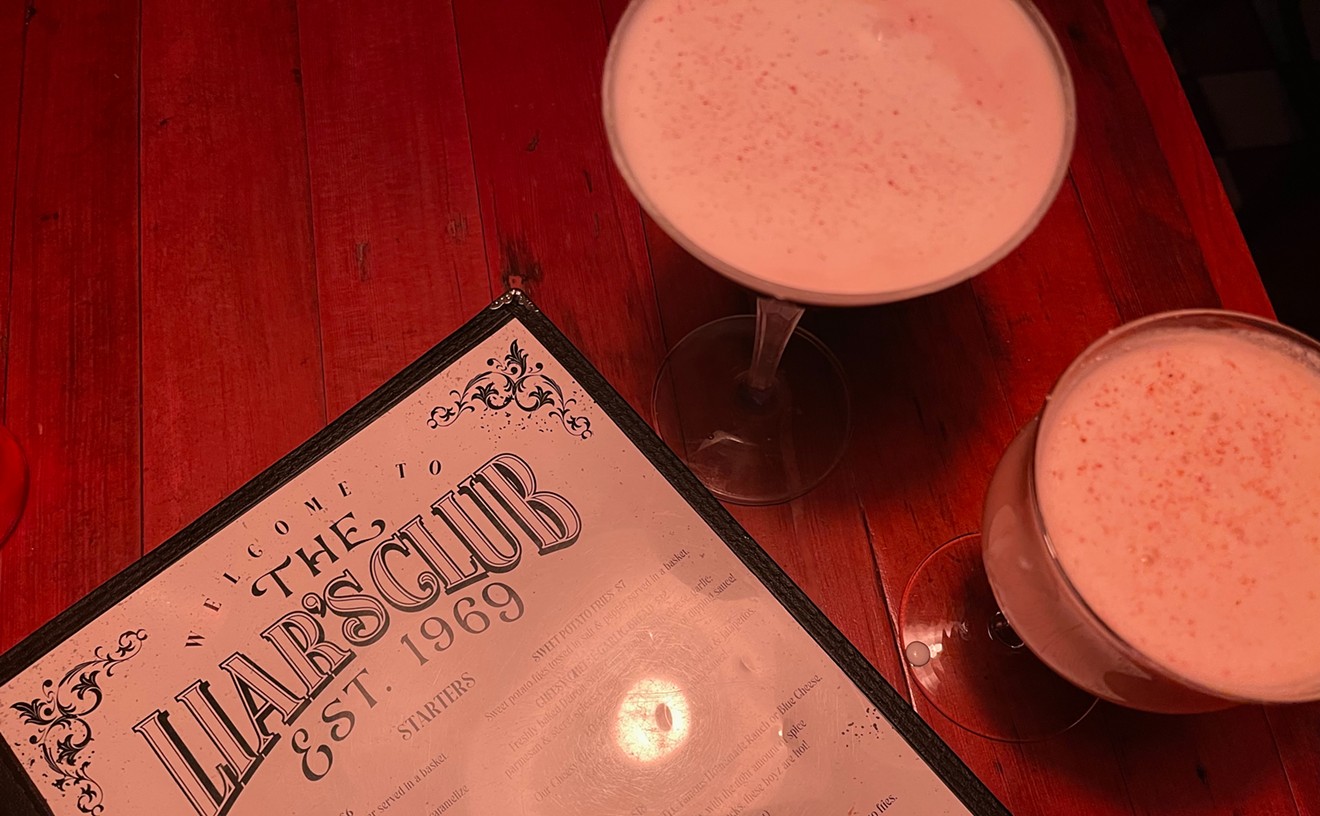On the subject of who has the best tamales in the Valley, the debate never seems to end. Given the countless national and international variations of the wrapped snack, the issue won't resolve itself anytime soon.
But when it comes to tamales oaxaqueño, the discussion stops with La 15 y Salsas, the Oaxacan restaurant in Sunnyslope. There's little doubt that its owner, Elizabeth Hernandez, makes the best.
Not just because of the homemade masa, which is moist and delicate, or the flavor infused from its banana leaf wrapping, but because its star ingredient — a signature mole negro — is one of the Valley's finest. The dark, intricate sauce is made with chocolate, as well as dozens of nuts, chiles, and spices — some of which Hernandez grinds herself on a metate, or mealing stone. And the mole is more than just a filling — it's spooned over the top of the tamale as well. Delicious.
Hernandez grew up making mole with her mother and grandmother in Oaxaca, in southwestern Mexico, before coming to Phoenix in 2008. Her opportunity to prepare it for the masses came 10 months ago, when she was working at La 15 y Salsas, at that time a Mexican deli and grocery. No longer able to run the business, her boss offered Hernandez her first chance at restaurant ownership. She took it, adding "Restaurant Productos y Comida Oaxaqueña" to the name, stocking its shelves and deli cases with Oaxacan products, and remodeling the interior to take on more of a restaurant feel.
"In Mexico, women work harder than the men, and a lot of the work they do is making and selling food," says Hernandez, translated by La 15 y Salsas employee Arlette Ruales. "Since I have been making Oaxacan food all of my life, I wasn't worried about the cooking. And this area has a large Oaxacan population, which is good. Now I want people who don't know about Oaxaca to learn about my tradition."
You don't have to eat just mole at Hernandez's restaurant — but you could. She makes two kinds: black mole, which is smoky, spicy, and a bit sweet, and mole rojo, which is spicier and simpler than the black and made without chocolate. The black mole comes standard on the tamale oaxaqueño. A choice of red or black can be had generously spooned over chicken served with rice and homemade corn tortillas or chicken enchiladas (enmoladas) topped with onions and Mexican cheese.
Moles, as well as about 20 other selections, are pictured on a menu behind the counter. Stellar Oaxacan dishes are the mainstay, made from Hernandez's family recipes, which incorporate an abundance of spices and herbs and require patience and time to prepare. There are a few Mexican standards as well — tacos, burritos, gorditas, and the like — but they are not what you've come here for. And if you ask for a suggestion or two from the friendly staff — perhaps Ruales or Hernandez's son Ricardo — they will not be recommended.
"We sell those items because they're well-known," says Ruales. "But the authentic Oaxacan dishes are the best. And those are what we want our customers to experience."
Before you dig in, make sure to cool off with an agua fresca. Made daily by Hernandez's son and served in small plastic pitchers, the rotating selection includes standards like horchata, tamarindo, and jamaica, as well as less frequently encountered Oaxacan specialties such as chilacayote (squash sweetened with honey, cinnamon, and unrefined whole cane sugar) or tejate (a blend of corn, cacao beans, and mamey seed).
If the subject of the Oaxacan street food tlayudas comes up, you should say "yes." The thin, crackly corn tortillas, the size of dinner plates, are made in and imported from Oaxaca. Hernandez slathers them in a black bean sauce before covering them with lettuce, tomato, ropy and salty Oaxacan cheese called quesillo, and your choice of bright orange bits of al pastor marinated in vinegar and spices, long strips of the Oaxacan jerky-like beef called tasajo, or a little of both.
You'll want the latter. Flavorful and expertly prepared by Hernandez's husband, a former butcher in Oaxaca, the meats are often purchased, along with the crispy tortillas, by Oaxacan customers who want to make tlayudas at home.
There are other street foods as well. Skip the standard quesadillas for quesadillas fritas. Packed with quesillo, folded over and fried, then topped with a seasoned bean sauce and more Mexican cheese, these pastry-like treats are pretty much perfect. And if you order up the trio of memelitas, be sure to add a strip of tasajo. The tiny corn tortillas topped with black bean sauce and handfuls of white Mexican cheese are pretty plain on their own, but with bites of the salty beef and Hernandez's complimentary threesome of homemade salsas (a creamy and spicy avocado, a biting tomatillo, and a smoky and hell-hot red), they get very good very fast.
As an entrée, the very good chicken enchiladas are packed with fresh, juicy meat whose flavor is amped up thanks to pieces of roasted skin. In addition to being served as mole-topped enmoladas, the enchiladas can be ordered as, for something like an Italian dish by way of Oaxaca, entomatadas, in which they are covered in a glowing red sauce of tomatoes, garlic, onions, and chiles. Or get them as excellent enfrijoladas, smothered in a dark-as-night sauce made of black beans and hojas de aguacate — anise-flavored dried avocado leaves — a mixture used on dishes throughout the menu.
And for soup lovers, there's the popular amarillo, a spicy homestyle creation afloat with bone-in chicken (or, if you desire, beef or pork) and carrots, potatoes, and giant pieces of squash with do-it-yourself additions of rice, cilantro, and lime. Ruales tells me it is a favorite among the Mexican men who eat at the restaurant and is the only item some of them ever order.
If you visit La 15 y Salsas for the food, there's a chance you might do a bit of shopping as well.
The cheery little room, painted in orange and lime green and filled with clusters of Mexican tile-topped tables, also boasts deli cases and shelves filled with items from Hernandez's homeland. Along with balls of quesillo, bags of hojas de aguacate, and dark brown orbs of Oaxacan chocolate are numerous spices, beans, baked goods, and cooking implements, such as molinillos, ornately carved wooden whisks used to make Oaxacan hot chocolate. And for the adventurous shopper, there's a plastic dish filled with salt and roasted chinicuiles, thin red insect larvae, about an inch or so long, that live on maguey and agave plants. In Oaxaca, they are sprinkled atop tortillas.
The little red worms are crunchy and salty and have a lime-like aftertaste. If you try one, you might catch Hernandez beaming. Her restaurant is the kind of place that will leave you beaming, too.










